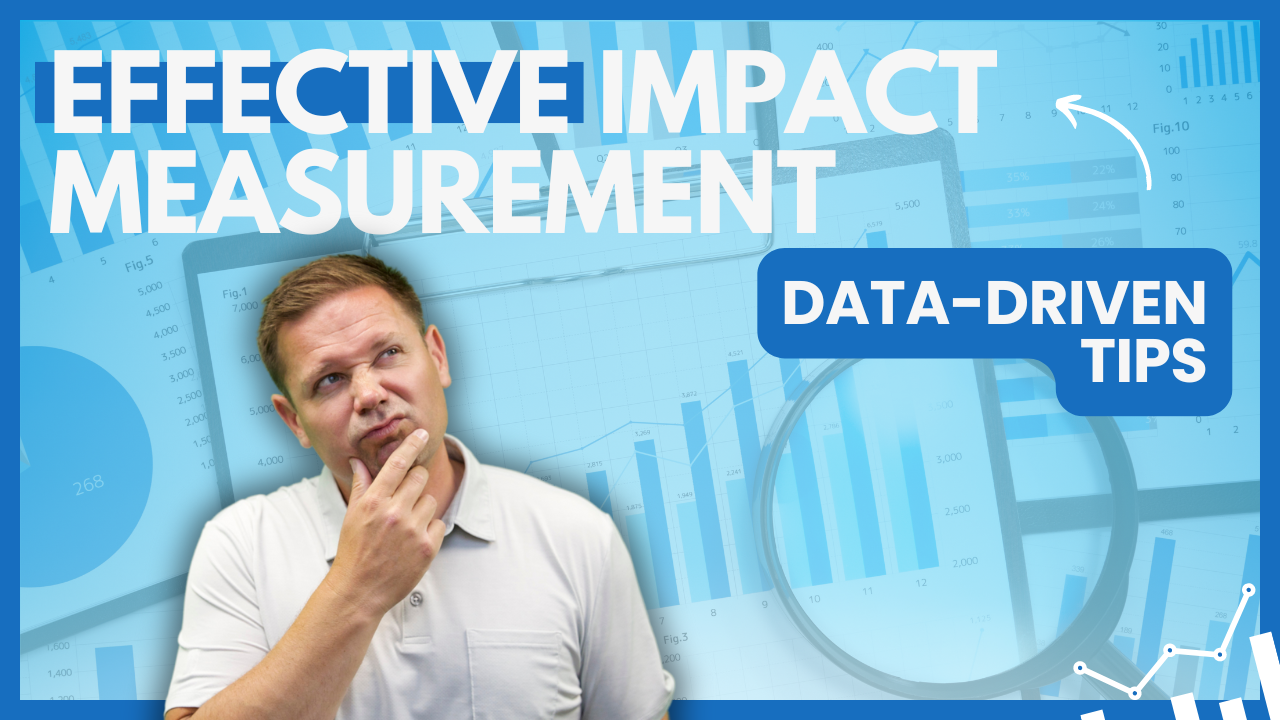
When I speak with nonprofit founders or CEOs, one clear indicator of their experience level often emerges when I ask about data collection and impact measurement. New organizations frequently respond with uncertainty—“No, I don’t bother collecting numbers” or “What kind of data collection am I supposed to be doing?”—which tells me they’re in the early stages. But don’t worry if you’re in the same position; this guide will help you set up effective impact measurement and establish specific goals.
Why Impact Measurement Matters
Measuring impact isn’t just about creating impressive reports; it’s crucial for transparency and accountability. Your stakeholders rely on these reports to gauge your progress, and they want to see concrete evidence of your achievements. Moreover, data collection helps you assess how efficiently your organization is operating and identify areas for improvement.
Setting Up for Success: Defining KPIs
To start with impact measurement, you need to decide what you want to measure. Begin by defining Key Performance Indicators (KPIs). If you’re unfamiliar with the term, KPIs are simply numerical indicators that track how well your organization is achieving its goals. For instance, if your goal is to reach more people with your services, your KPI might be the number of people served.
Record your baseline data—this is your starting point. For example, if you’re currently serving 300 people per month, your initial goal might be to increase that number to 400. This makes your goals more specific and tangible.
Choosing Tools for Data Collection
Once you’ve identified your KPIs, set up a system to track your data. For smaller datasets, tools like Excel or Google Sheets can suffice. For more complex needs, consider using Customer Relationship Management (CRM) systems, project management tools, or specialized impact measurement software like Impactosaurus.
Regular Data Collection and Review
Establish regular intervals for data collection and review—monthly, quarterly, annually, or per event. Different KPIs might require different review schedules. Tools like Asana or Trello can help you manage these tasks and ensure you don’t miss any deadlines.
Analyzing and Sharing Results
Regularly analyze your data to determine if adjustments to your goals are needed or if any departments are underperforming. It’s crucial to share these results with your team and stakeholders.
Create an official annual report that highlights your data, complete with engaging infographics and a thorough analysis. Distribute this report at the beginning of the following year, either through email or during meetings. For added transparency, publish the report on your website to make it accessible to the wider community.
Additionally, consider producing smaller, more frequent reports—like quarterly updates—to keep stakeholders informed and engaged. A simple PowerPoint presentation can be effective for these interim updates.
By following these steps, your nonprofit can build a solid foundation for impact measurement and data collection, setting you on the path to greater transparency and effectiveness. Gather your team, discuss these strategies, and download the accompanying worksheet for additional support.
Frequently
Asked Questions
Impact measurement is crucial because it provides transparency and accountability to stakeholders. It helps demonstrate the effectiveness of your programs, assess your organization’s efficiency, and identify areas needing improvement. Accurate data also builds trust with supporters and enhances your organization’s credibility.
Key Performance Indicators (KPIs) are numerical metrics used to track how well your organization is achieving its goals. KPIs help you quantify your progress, set specific targets, and make data-driven decisions. They are essential for measuring success and making informed adjustments to your strategies.
Start by defining your organization’s goals. Choose KPIs that align with these objectives. For example, if your goal is to increase outreach, a relevant KPI might be the number of people served. Ensure your KPIs are specific, measurable, and directly linked to your goals.
For basic data tracking, Excel or Google Sheets can be effective. For more complex needs, consider using Customer Relationship Management (CRM) systems, project management tools like Asana or Trello, or specialized impact measurement software like Impactosaurus. Choose a tool that fits your organization’s size and data complexity.
Data collection and review intervals can vary based on the KPI. Common schedules include monthly, quarterly, or annually. You might also review data after specific events. Use project management tools to help you stay organized and on track with your data collection schedule.
Your annual impact report should include a summary of your data, analysis of your performance, and visual elements like infographics. Highlight key achievements, areas for improvement, and any adjustments made to goals. Distribute this report to stakeholders and publish it on your website for transparency.
Provide regular updates through smaller reports or presentations. Quarterly updates or simple PowerPoint slides can keep stakeholders informed about your progress and any significant changes. This maintains engagement and shows ongoing accountability.
If you’re new, start by collecting initial data as soon as possible to establish your baseline. This initial data will help you set realistic goals and measure progress. Even early numbers are valuable for setting targets and understanding your starting point.